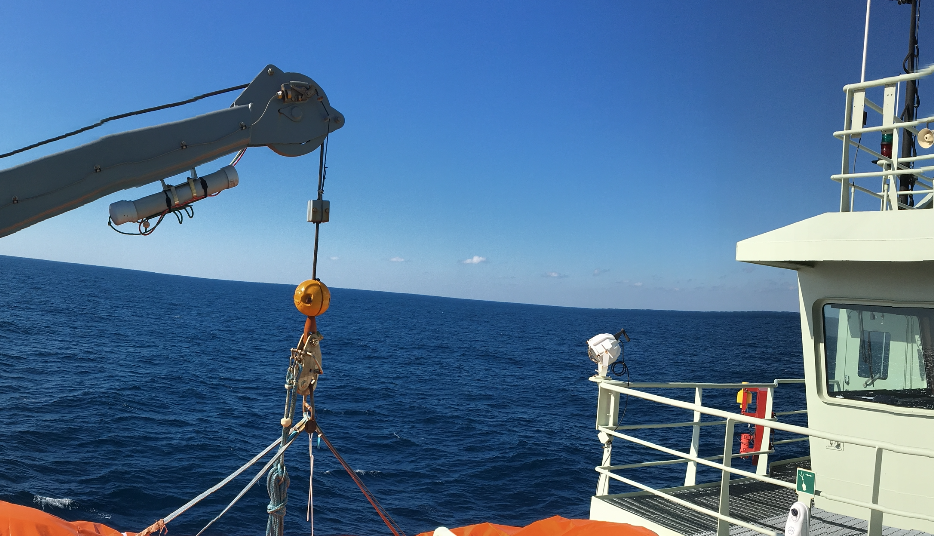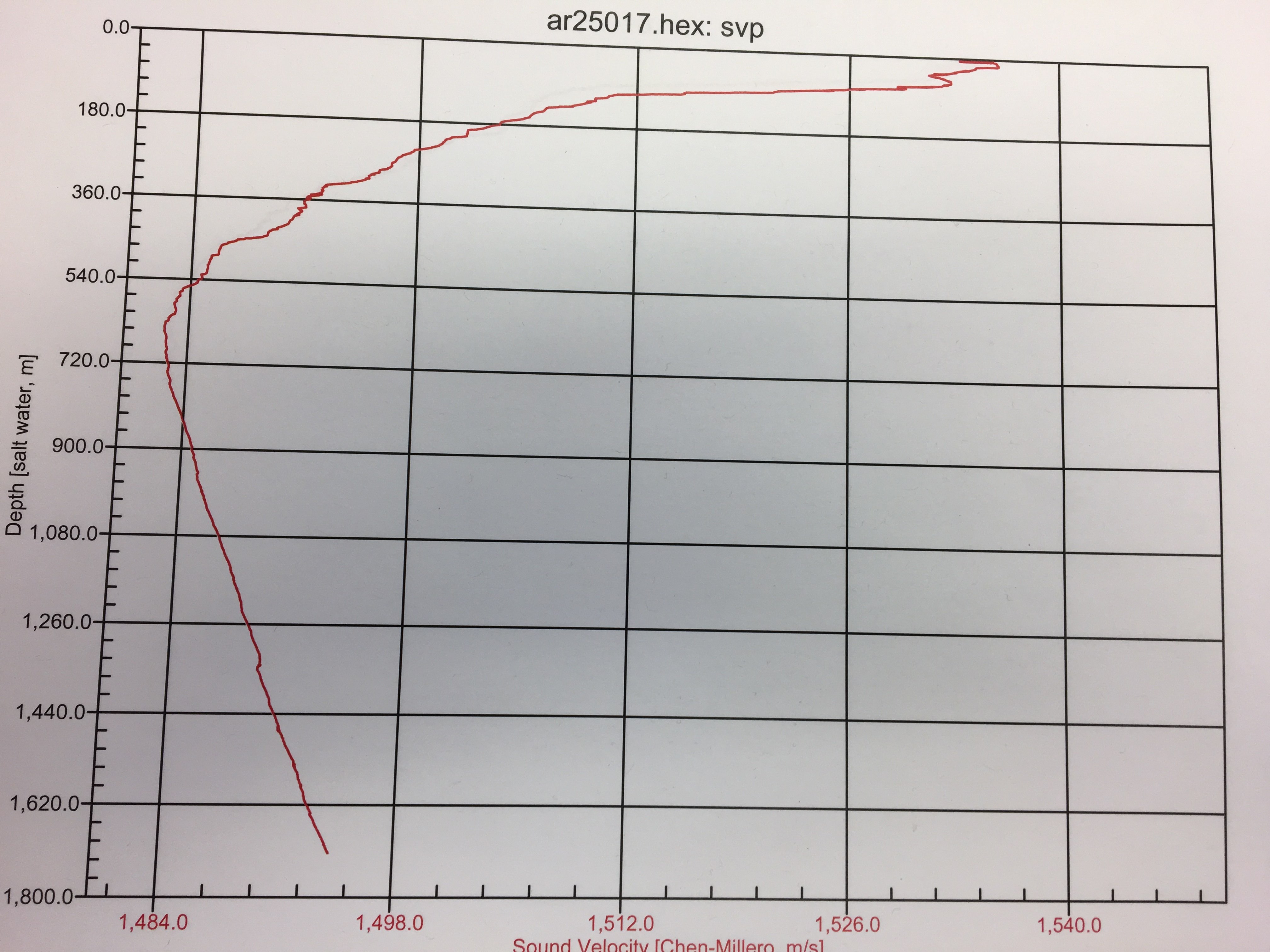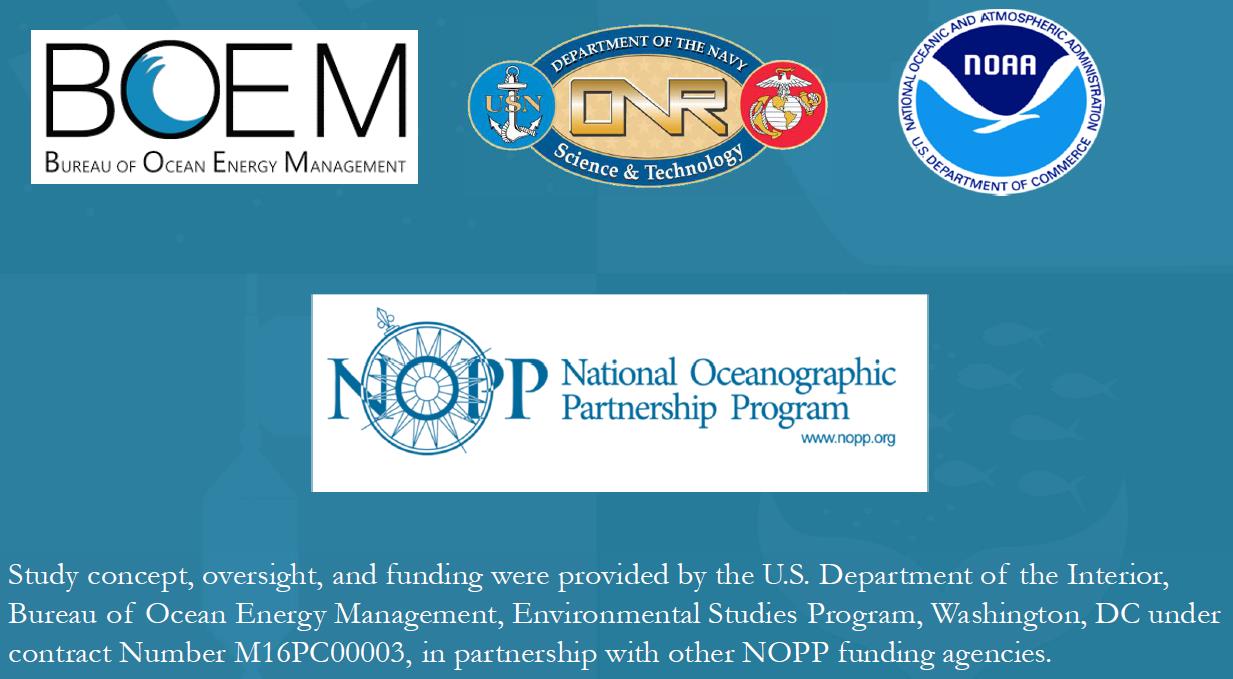Today's Blog is by Kevin Heaney, from OASIS, the science team’s ocean acoustics guy....
Today marks the completion of our first full week at sea. The weather's been great (sea-state 2, small waves, light wind for today) and the cooks keep providing fresh salads, two veggies, and two main courses PLUS dessert for each meal.
 |
Also, a week at sea, means that it's Sunday, which traditionally means it's steak night. This was confirmed by the smell of the grill wafting across our shifts as marine mammal observers. It also means it's football Sunday for the TV and satellite radio. (How things have changed, we used to have no TV, and a single beer on Sundays.)
The science crew has settled into a diurnal rhythm of biology at night and physics during the day. The tons of itty-bitty creatures found in the nets by the biologists each night has been awesome. The physics portion of ADEON is the study of the current state of the ocean soundscapes in the Atlantic OCS; and the investigation of how sound propagation and ambient noise couple with the marine ecosystem. The physicists are working during the day because they need daylight to deploy equipment, perform site characterizations, and conduct marine mammal observations. During the day they've been taking CTD (Conductivity - Temperature - Density) measurements which can indicate the water distribution chemistries and thereby, the sound propagation capabilities of the ocean at the measurement location. A CTD profile is shown below.
 |
The ocean temperature and to a lesser bit, the sea water's conductivity (through its salinity), strongly affects how sound travels in the ocean. For this profile, there is a deep sound channel at 800m, which is ubiquitous in the mid-latitude oceans. Sound refracts away from high sound speed, so sound sources at the surface (whales, ships, wind, waves) will not go far without hitting the seafloor.
The highlight of the trip for me, was on the first night during CTD measurements when a very large pod of Atlantic White Sided Dolphins appeared. At any time, there were approximately 50 of these animals observable from either side of the ship. They clearly liked the fish that were being attracted to our work lights. The photo below is a poor resolution iPhone picture, but you can see how many dolphins there were and how easy it was to observe them around the vessel.
 |


